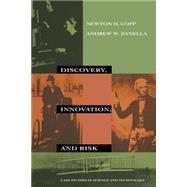
| Preface | |
| Acknowledgments | |
| Introduction | p. 1 |
| Science Joins Engineering | p. 3 |
| Discovery | |
| Telegraphy: The Beginnings | p. 13 |
| Hydroelectric Power: The Irony of Los Angeles | p. 36 |
| The Flying Machine Problem: The Wright Stuff | p. 78 |
| Innovation | |
| Fossil Fuels, Steam Power, and Electricity: Los Angeles Revisited | p. 129 |
| Gasoline: From Waste Product to Fuel | p. 146 |
| Bridge Design: Concrete Aesthetics | p. 192 |
| Risk | |
| Vaccines: Good Intentions Are Not Enough | p. 245 |
| The Greenhouse Effect: Revolution Involves Risk | p. 289 |
| Atomic Power: Difficulty in Estimating Cancer Risks | p. 321 |
| Conclusion | |
| An Intricate Web | p. 377 |
| Abbreviations, Symbols, and Units | p. 385 |
| Glossary | p. 389 |
| Bibliography | p. 405 |
| Index | p. 417 |
| Table of Contents provided by Blackwell. All Rights Reserved. |
The New copy of this book will include any supplemental materials advertised. Please check the title of the book to determine if it should include any access cards, study guides, lab manuals, CDs, etc.
The Used, Rental and eBook copies of this book are not guaranteed to include any supplemental materials. Typically, only the book itself is included. This is true even if the title states it includes any access cards, study guides, lab manuals, CDs, etc.